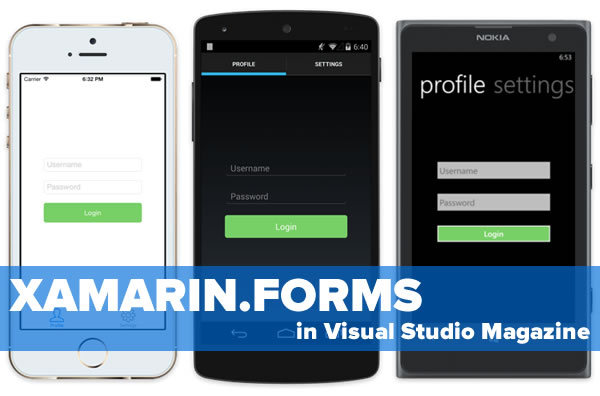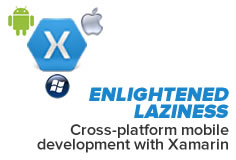
Don’t get the reference? It’s about a quote popularly attributed to Bill Gates.

Don’t get the reference? It’s about a quote popularly attributed to Bill Gates.

“I have the second toughest mobile evangelist job,” I used to say when I was a Windows Phone champ. “The toughest job…that’s Alec’s.”
Anybody can promote the Android and iOS platforms to developers. Taking on the job of being the head of BlackBerry’s developer relations team in late 2011, in the era of iOS 5 and the beginnings of Android 4 called for a rock star, ninja, and Jedi master all rolled up into one person. Luckily, Alec Saunders fits that description, and for three years he worked tirelessly to bring developers to the BlackBerry platform.
Yesterday, he announced that his last day at BlackBerry/QNX would be “sometime between now and November 3”. I don’t know what his plans are, but from one tech evangelist to another, I wish him the best in whatever challenge he takes on next, and thank him for honoring the profession through his hard work, and his fearlessness in taking on a cheesy ’80s hit in a “rally the BlackBerry troops” music video. You know the one I’m talking about…
I can’t think of a more fitting way to send him a tribute than with the same song:
I’m wishing you the best of luck, Alec, but I know you’ll kick ass wherever you go.
I was taking a trip down memory lane, flipping through an old Bloom County collection when I saw this classic strip…
Click on the comic strip to see the source.
…and it occurred to me: this is how a lot of so-called “agile” software projects are run.
On second thought, make that software projects, period.

 It’s a sign of the times when Visual Studio Magazine covers a development tool that’s neither Visual Studio nor even made by Microsoft. Lately, they’ve been giving a lot of love to Xamarin, which lets you code with C# and the .NET Framework to create native Android, iOS, MacOS, and Windows apps, with particular attention paid to Xamarin.Forms, their new cross-platform UI API that lets you target Android, iOS, and Windows Phone with a single code base.
It’s a sign of the times when Visual Studio Magazine covers a development tool that’s neither Visual Studio nor even made by Microsoft. Lately, they’ve been giving a lot of love to Xamarin, which lets you code with C# and the .NET Framework to create native Android, iOS, MacOS, and Windows apps, with particular attention paid to Xamarin.Forms, their new cross-platform UI API that lets you target Android, iOS, and Windows Phone with a single code base.
With Xamarin.Forms, you build mobile UIs using an API that abstracts away each mobile OS’s particular features as far as the developer is concerned. When you create a Button in Xamarin forms, it becomes an Android Button instance on Android devices and a UIButton view on iOS devices. I’ve been noodling with Xamarin.Forms for the past few weeks and it looks like it’s the tool I’ll use to build sales, marketing, and training apps for partner organizations of GSG, the company I work for.
In their article, Simplifying Cross-Platform Mobile App Development with Xamarin.Forms, Visual Studio Magazine’s Wallace McClure suggests that you ask these questions when considering adopting Xamarin.Forms as your development platform:
The article also features a sample app, which takes JSON data from a remote source via .NET’s HttpClient and displays it in list form as shown below:
It’s worth noting that they don’t show a Windows Phone screenshot — just Android and iOS. You can download the code here.
Another Visual Studio Magazine article, Xamarin.Forms: What Developers Make of It, has McClure talking to developers who participated in the Xamarin.Forms beta program as well as Xamarin evangelist Craig Dunn. Some quotes:
Xamarin isn’t just doing their part for cross-platform coding, but cross-platform testing as well, with Xamarin Test Cloud. Xamarin Test Cloud lets you test your apps on thousands on devices with your having to acquire them all. According to the Visual Studio Magazine article Xamarin Test Cloud Now Available:
Xamarin Test Cloud can provide simulated testing environments for more than 1,000 devices, from desktops to mobile devices and includes the various OS versions on a number of platforms.
Xamarin Test Cloud can be used to automate testing of apps through its Calabash cross-platform test automation framework whether developers are working in any C# or Ruby supported tool suite, and can report back on memory and CPU usage performance and test durations. Automated testing can be integrated into Team Foundation Server and other continuous integrations systems like Jenkins and TeamCity.
Xamarin Test Cloud is able to gain access and collect diagnostics information from device logs, stack traces and through hardware data to generate performance reports for more accuracy.
Today’s Swift Kick features a roundup of tutorials and resources for the Swift developer who’s into game programming. If you’ve been meaning to learn Swift, games are a fun way to do so, and if you’ve been meaning to learn game programming, you’ll find these useful!
Brian Advent (whom I’ve written about before) has posted a video tutorial showing how to build a networked tic-tac-toe game using iOS’ Multipeer Connectivity Framework, which allows you to connect and share data with devices nearby.
Two years ago, Ray Wenderlich posted the sort of game programming tutorial that he wanted to see: in his own words, “very simple but functional game with animation, collisions, and audio without using too many advanced features.” The resulting game is the one pictured above, featuring a shuriken-hurling ninja taking on approaching monsters.
The game was originally written in Objective-C and used the open source cross-platform 2D gaming framework Cocos2D 1.X, and was followed by an update for Cocos2D 2.X. When Sprite Kit came out, Ray wrote a new version of the game using that framework, and I took some ideas from that game and turned it into a simple shoot ’em up game in Swift.
While it can be argued that Swift is not a functional programming language, it certainly lends itself better to functional programming techniques than many other languages, Objective-C included. With this in mind, take The Game of Life with Functional Swift, written by Colin Eberhardt, one of the co-authors of the RayWenderlich.com books iOS8 by Tutorials, Swift By Tutorials, and Core Data by Tutorials. He writes:
This blog post shows an implementation of Conway’s Game of Life using functional techniques in Swift. This results in code which is a clear and concise representation of the game’s logic. I also take a closer look at ranges, intervals, the pattern match operator,
~=and how local functions help organise your code.
Taking a functional programming approach allowed Colin to condense the rules of Conway’s Game of Life down to this:
// rules of life
let liveCells = cells.filter { $0.state == .Alive }
let deadCells = cells.filter { $0.state != .Alive }
let dyingCells = liveCells.filter { livingNeighboursForCell($0) !~= 2...3 }
let newLife = deadCells.filter { livingNeighboursForCell($0) == 3 }
// updating the world state
newLife.each { (cell: Cell) in cell.state = .Alive }
dyingCells.each { (cell: Cell) in cell.state = .Dead }
If you’re looking for a challenge, you might want to take MakeGamesWith.Us’ implementation of the Game of Life (pictured below) and refactor it using Colin’s functional approach.
The latest Swiftcast, which you can listen to using the player above, is all about game programming in Swift:
Swift game development is very exciting. If it isn’t already obvious with the content of our site, we love to talk about game development. Mobile gaming is a rapidly growing market, and iOS is by far the most rewarding and exciting to build games for. If you’ve ever wanted to learn how to build an iOS game as an indie developer, we have some resources and advice for you.
RayWenderlich.com’s book, iOS Games by Tutorials, has been updated for iOS 8 and Swift. In 28 chapters and over 800 pages, you’ll learn game programing with Swift and Sprite Kit by building the following games:
Zombie Conga, where the player is a partying zombie who’s trying to build a conga line of cats while avoiding crazy cat ladies. It covers introductory topics such as sprites, processing touches, collision detection and scrolling.
XBlaster: a space shooter where you’ll work with physics and particle systems.
Cat Nap, where you’re trying to help a sleepy kitty get to bed. This is a “physics-based” game, so this introduces the Sprite Kit’s physics engine starting with the basics, but getting into stuff advanced enough for you to write your own version of Angry Birds or Cut the Rope.
Pest Control, a tile-mapped game where you take a Schwarzeneggarian hero on a bug-killing spree. This covers building a tile-mapping engine and adding all sorts of effects to a game.
Circuit Racer, a racing game made more complicated by obstacles on the track. This one features mixing Sprite Kit-based UIs with UIKit-based UIs, using the accelerometer, and interfacing with Game Center.
Also covered:
iOS Games by Tutorials is available in PDF form for $54, and it’s a great deal at the price. Buying it also gets you free updates for the life of the book; if you bought the earlier Objective-C/iOS 7 edition, you already own the current Swift/iOS 8 edition!
…my simple “shoot ’em up” game in Swift, which has also been updated to work with post-beta Swift.